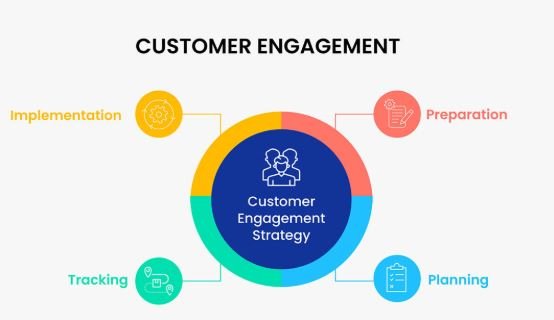The current competitive digital era does not see engagement of the audience creation as posting and waiting to get likes or shares. Since influential creators and brands resize their audience response and feedback into elements of transformation and growth, perhaps your standing as a content creator or marketer is much dependent on your mastery of feedback handling in a way to elevate your profile and enable lasting success.
Table of Contents
Why Feedback Matters in Engagement Strategies
The direct voice of your audience is the feedback. It reveals what works, what falls off, and where to make the improvements. In contrast to analytics, feedback has emotions, taste, and context attached to it- you get a better idea of what your audience wants.
Overlooking feedback may result in mistakes being made repeatedly, the lack of engagement from followers, and the loss of opportunities. However, when applied wisely, feedback also enables you to produce content that generates stronger relationships, gains credibility, and level of interaction.
Types of Feedback to Look For
Feedback does not always come in the same form. You should listen to various sources to maximize your engagement strategy:
- Comments and Replies: These will give you a clue on how well-received your message is by your audience.
- Polls and Surveys: Structured Responses will allow you to know tastes at an in-depth level.
- Direct Messages: Direct feedback contains personalized information on the issues that people might not post publicly.
- Engagement Metrics: Likes, shares, saves, and watch time represent the approval or disapproval indirectly.
- Constructive Criticism: Noble views can hurt initially, but in most cases, the direction is the most precise to follow to improve.
The awareness of such types of feedback can make you create a more flexible and audience-oriented content plan.
Turning Feedback Into Action
The short answer: What good is feedback if it is not being acted upon? Here is how you can make insights into one powerful engagement strategy:
Recognizing the Regular Patterns: The applicant must look into repeated themes in comments or in surveys.
Experiment and Adjust: Use the feedback to test variations in your content. For example, if your audience prefers behind-the-scenes content, introduce it regularly and monitor response.
Acknowledge Feedback Publicly: When you use the recommendations of your audience, thank them. This not only makes them feel appreciated but also makes more people give out feedback.
Balance Feedback With Your Brand Identity: Not every suggestion will align with your vision. Use feedback as a guide, but ensure it fits your brand values and goals.
Building Engagement Through Continuous Feedback
Feedback should not be a one-shot exercise. Rather, create a consistent rotation loop in which your audience will feel like a part of your journey. Post questions in the conversations, conduct frequent polls, or ask for personal input in live discussions. As soon as your followers feel that their feedback is being used to formulate your strategy, they are more engaged in your content. This feeling of involvement makes it more loyal and maintains high levels of engagement.
How Feedback Helps Push Your Profile to the Next Level
Not only do you improve content by actively using feedback, but you also establish better relationships. An interactive strategy sends your audience a message that you care about what they have to say, which automatically leads to trust. The outcome is an increase in the engagement rates, increased visibility, and enhanced community development.
Bringing more followers, more conversions, and any other change to how people feel about your brand, feedback will serve as a compass that will help you steer your content strategy in the right direction. That is, knowing how to use feedback productively will push your profile to the next level and distinguish you from the competition, who tend to make assumptions instead of listening.
Final Thoughts
Feedback should not be the opportunity to strike down dissent; rather, feedback is the opportunity to build up. When feedback from the audience is collected, processed, and responded to, it becomes easier to test methodology for audience engagement and create something worth its salt. Begin to view feedback as a guide, and your online persona will transform into one desirable, memorable, and enjoyable to your audience.
